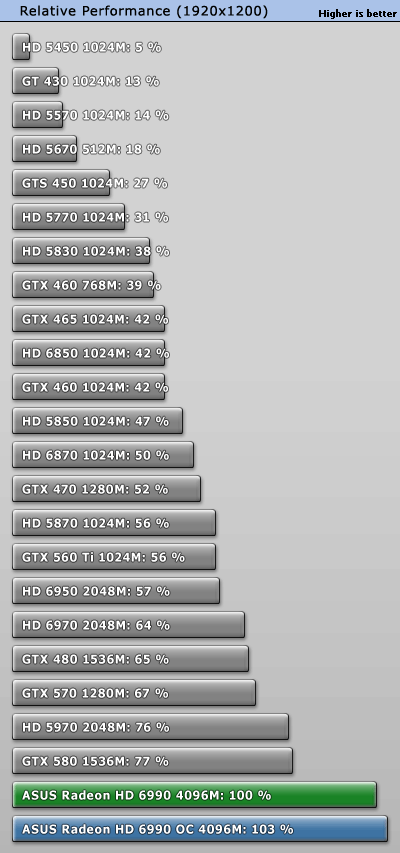A much more genuine comparison would be, well, from the same link
Which takes you away from the CPU bound world
From your criteria comparing a 6990 to a 6970 (~100% increase)
1920*1200
66.7 fps vs 37.4 fps (+78%)
and
2560*1600
43.1 fps vs 23.5 fps (+83%)
So in a sense yes, a 50% increase in GPU capability (Xbox One vs PS4) would probably result in a much better frame rate.
I'm personally fully expecting a ~40% increase in frame rate, without even considering bandwidth issues which could make matters even worse (or at best on par) for the Xbox One.
So put in real terms, if the Xbox One is running at 30 fps Vsync (assuming around 40 fps average to actually do that without hiccups), I wouldn't be surprised at all if the PS4 can easily hit ~50 fps on average.






